Abstract
A remarkable range of variation has been demonstrated in the biting habits of A. darlingi in South America. At the centre of its area of distribution, the species comprises both anthropo-endophilic and zoo-exophilic individuals, but the anthropophilic tendencies increase progressively towards the periphery of its distributional area. Conditions of travel and migration, imposed by the South American rain forest, have probably favoured the development of a specialized anthropophilic strain on a geographical pattern. There is ample evidence of a similar strain evolution in A. gambiae, but on a more confused pattern. Aëdes aegypti also presents an outstanding example of variation in biting habits.
A proper understanding of the extent and significance on anthropophilic and zoophilic tendencies is essential for the proper conduct of malaria control campaigns; for the formulation of long-term policies; and for the proper evaluation of the probabilities of resistance to insecticides.
Full text
PDF
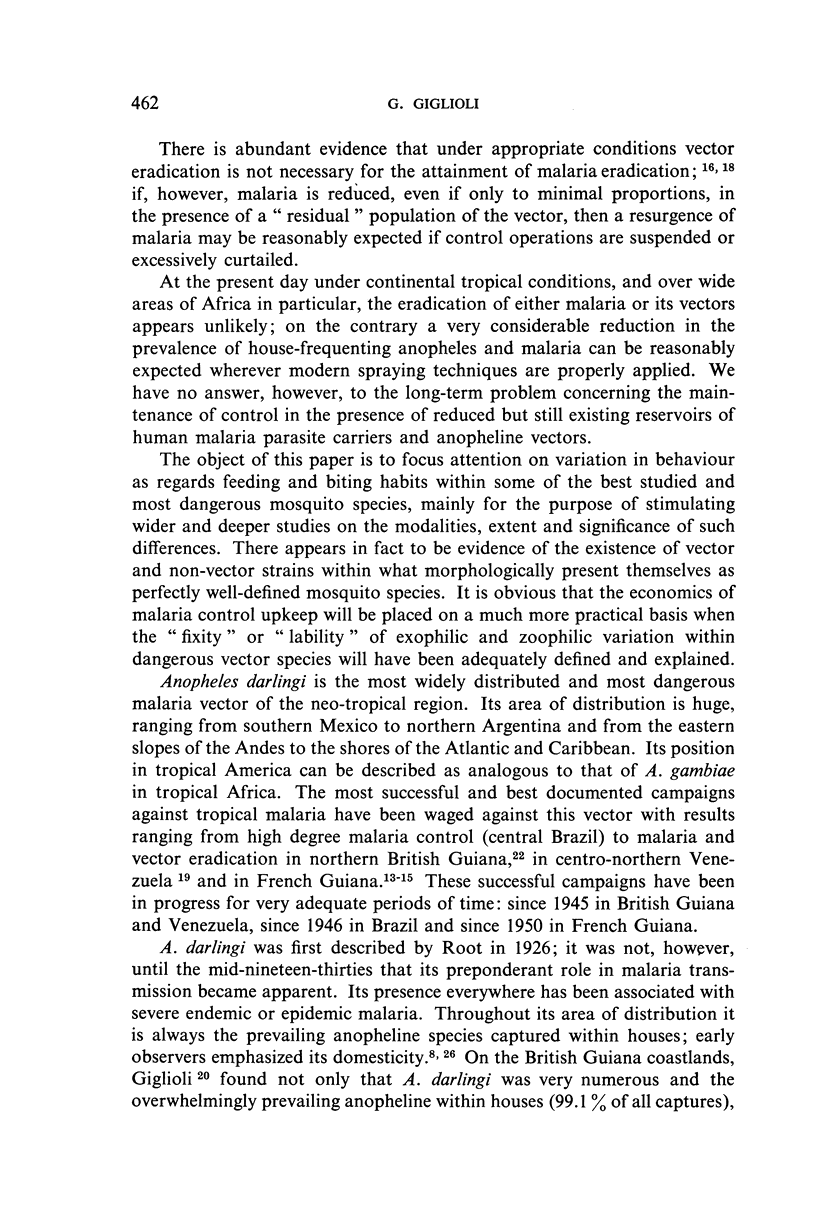
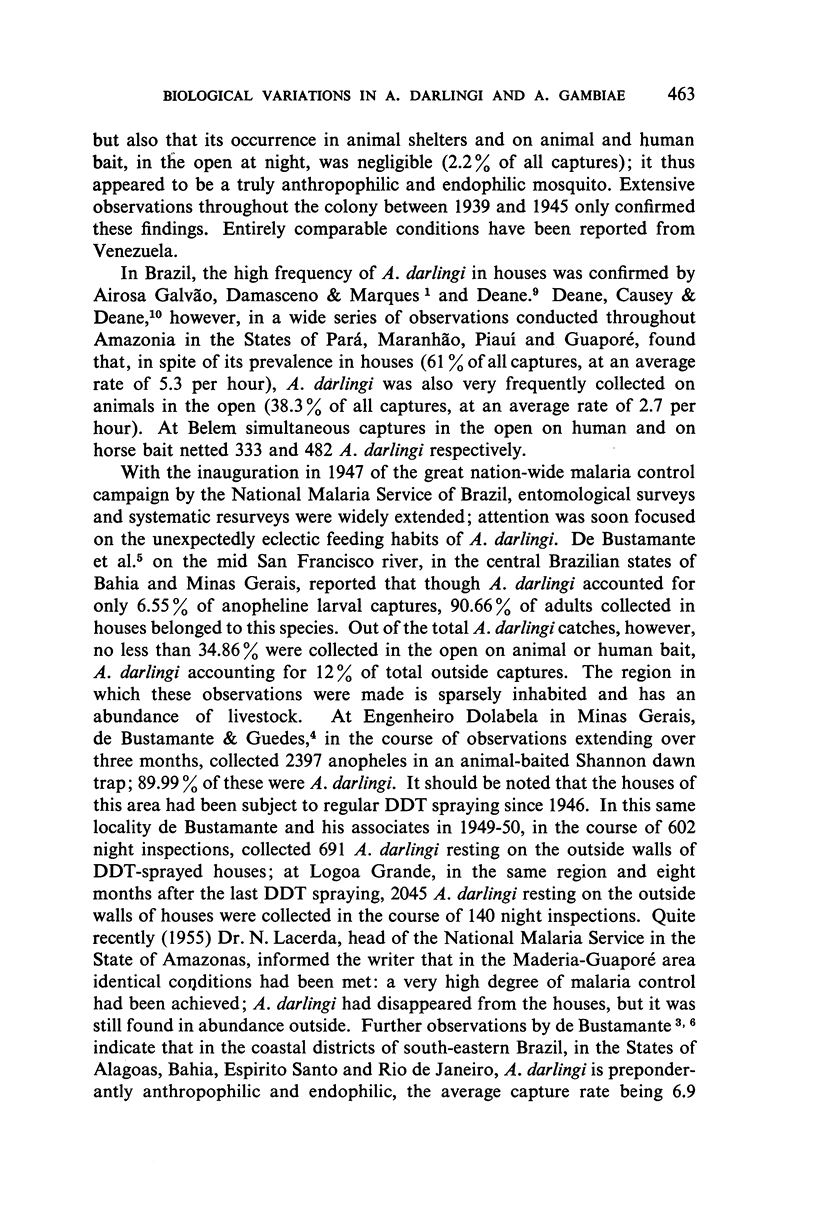
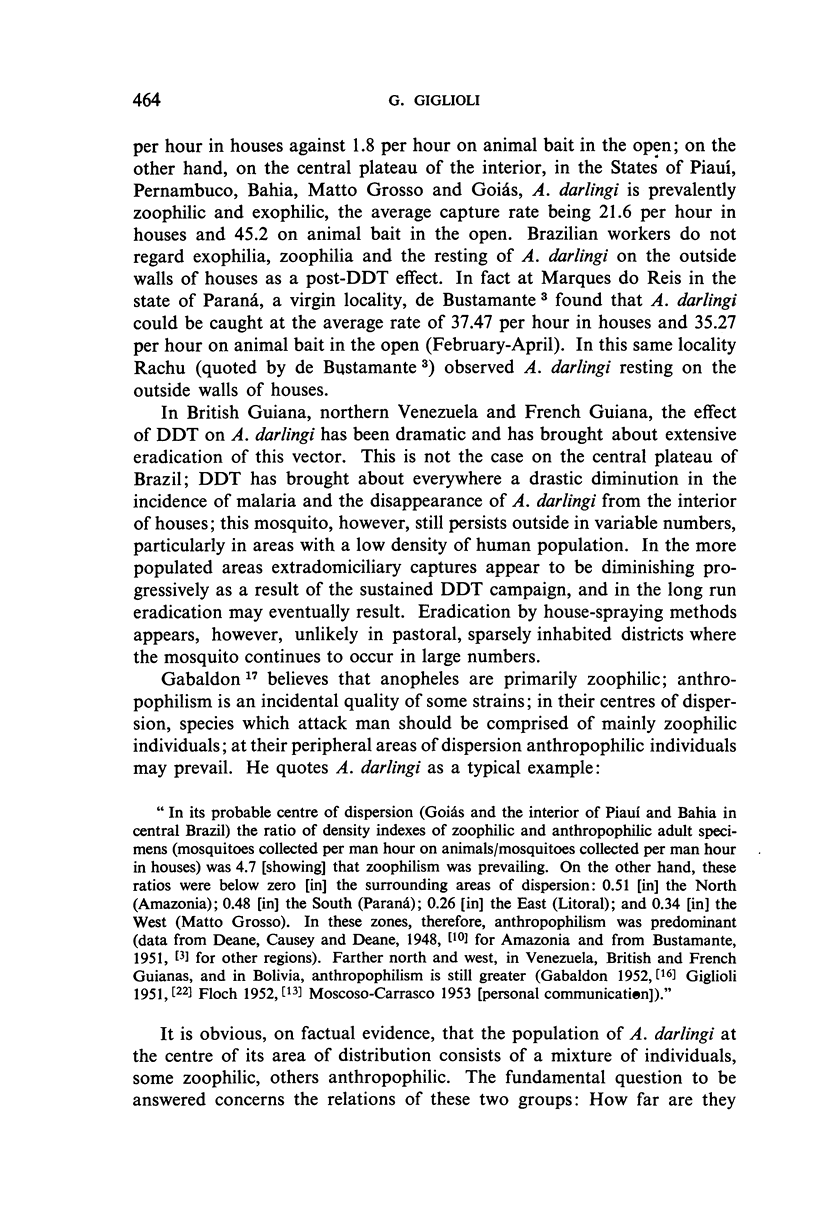
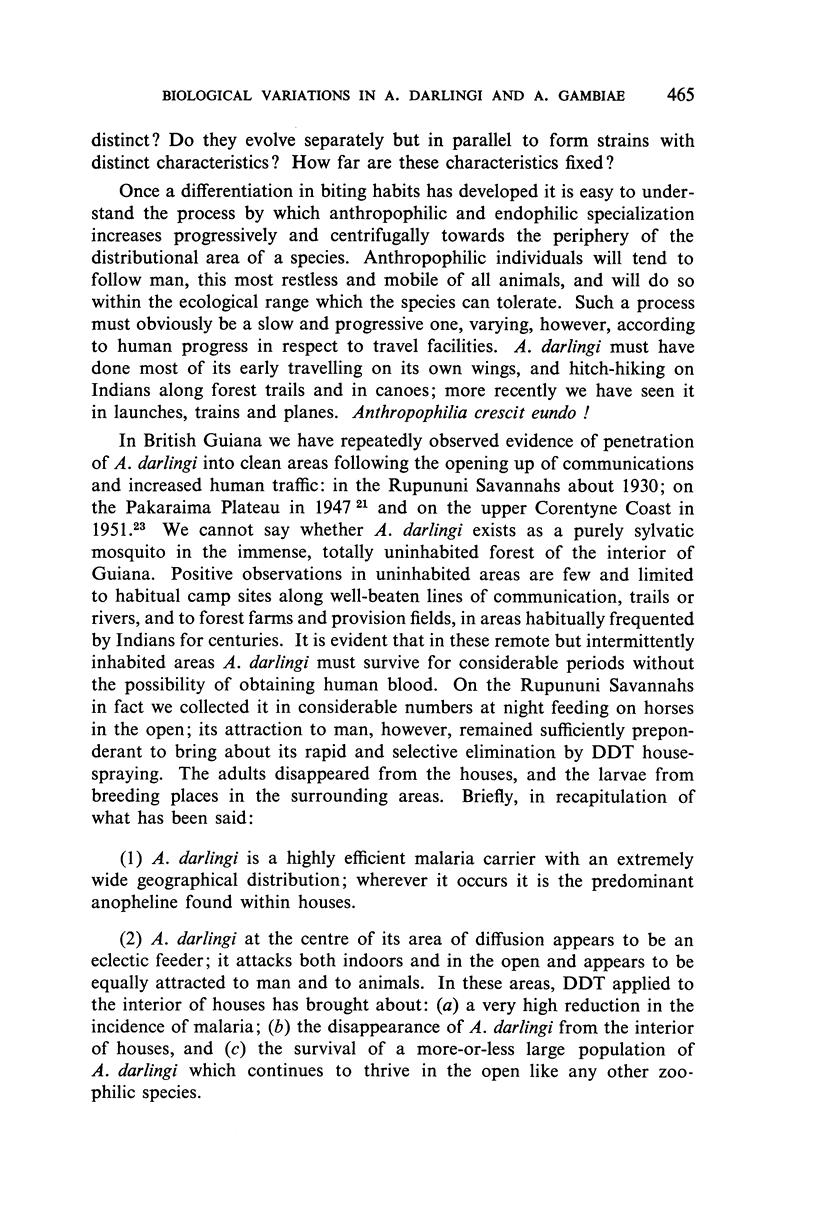
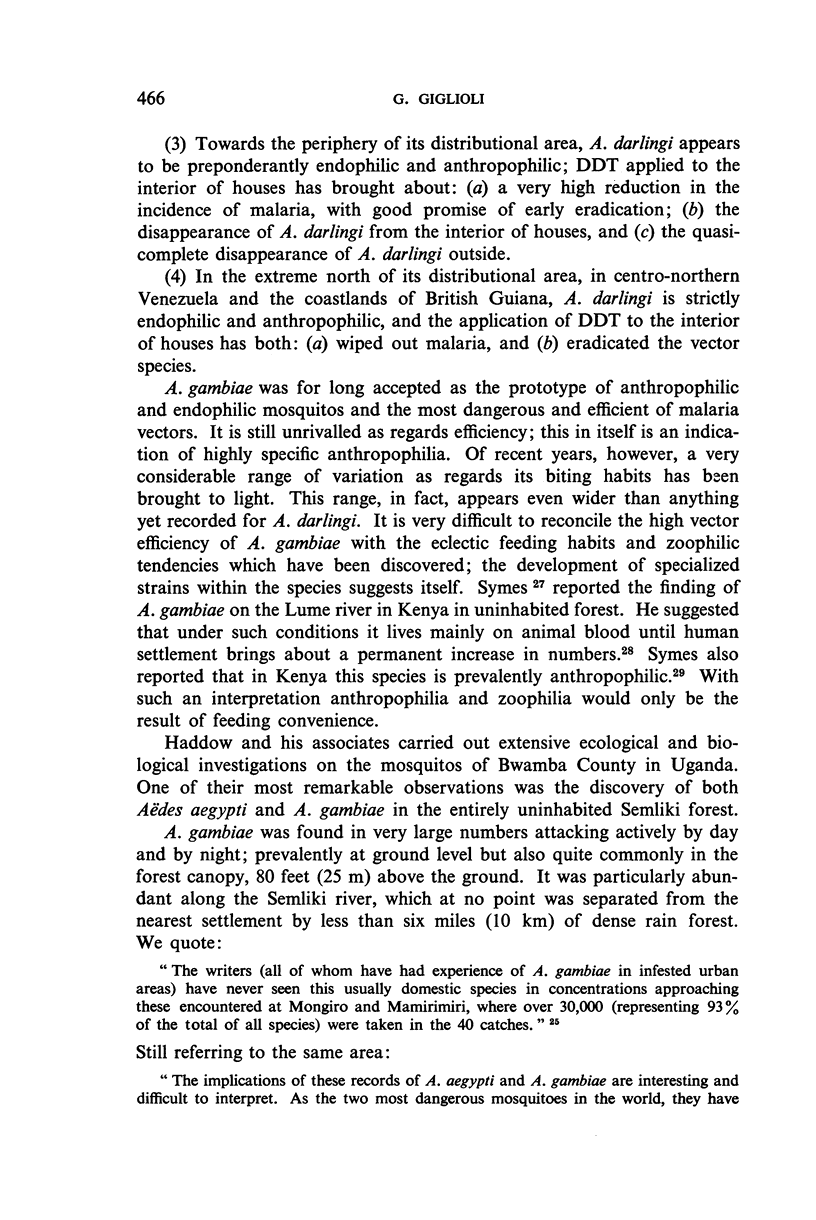
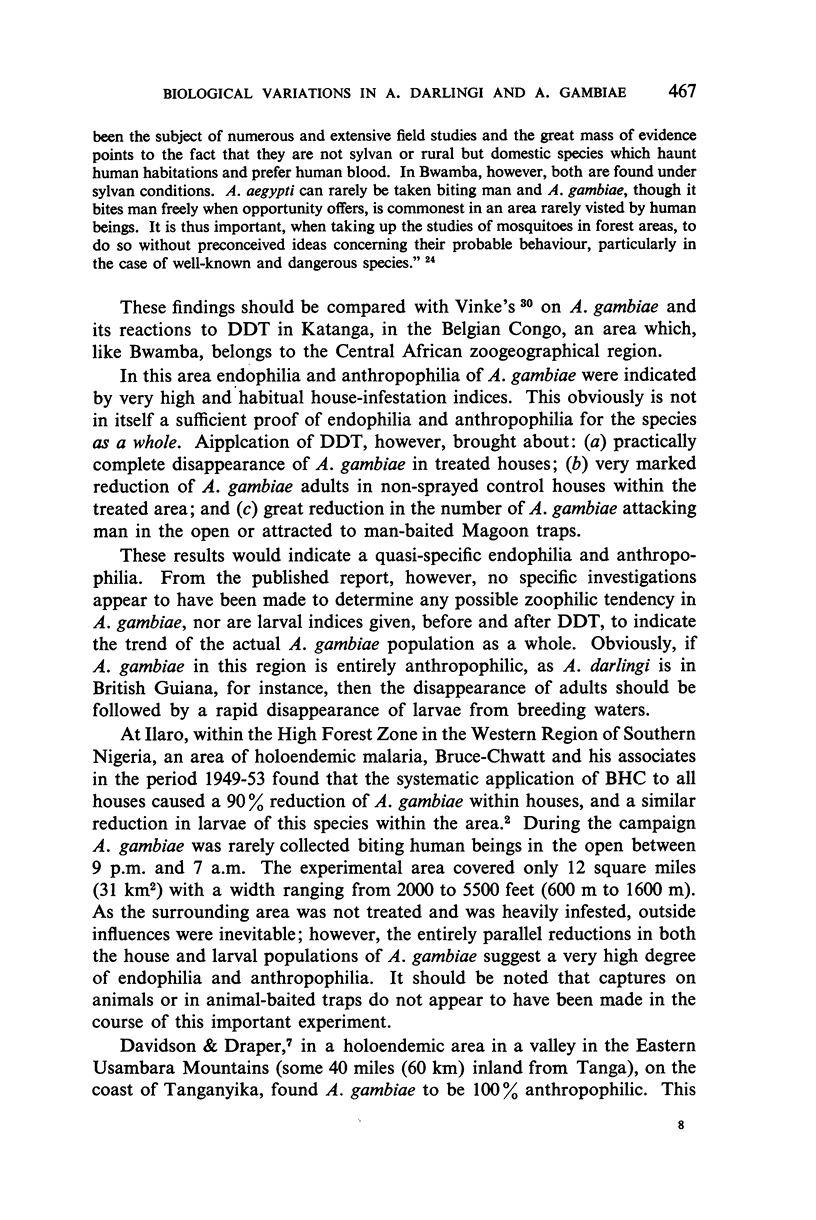
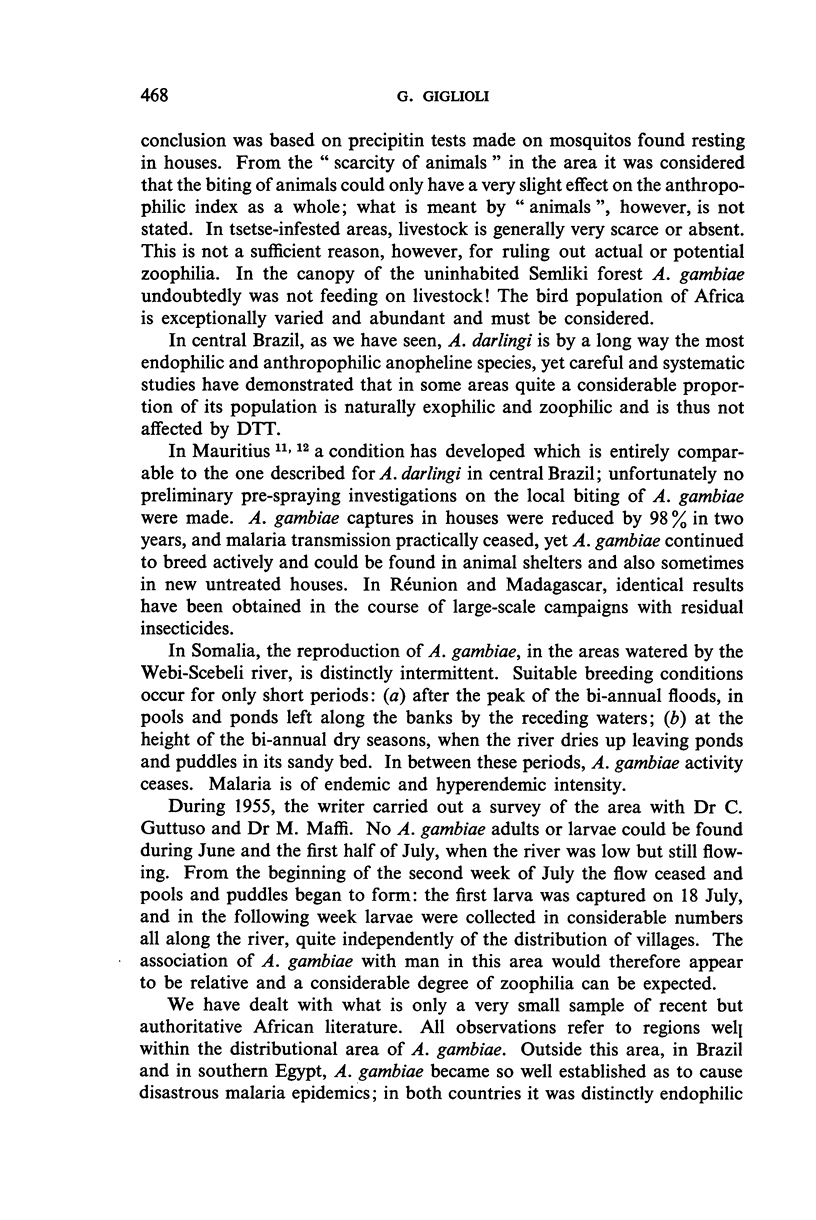

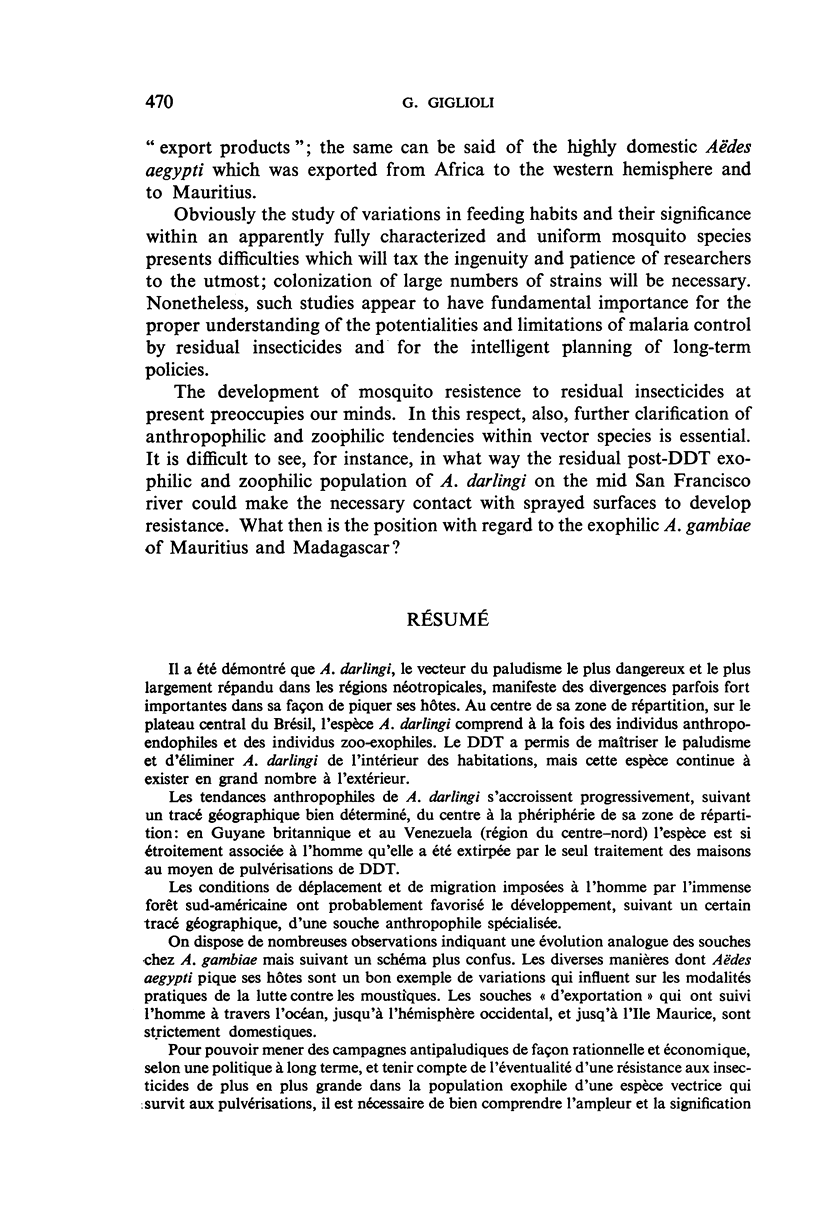
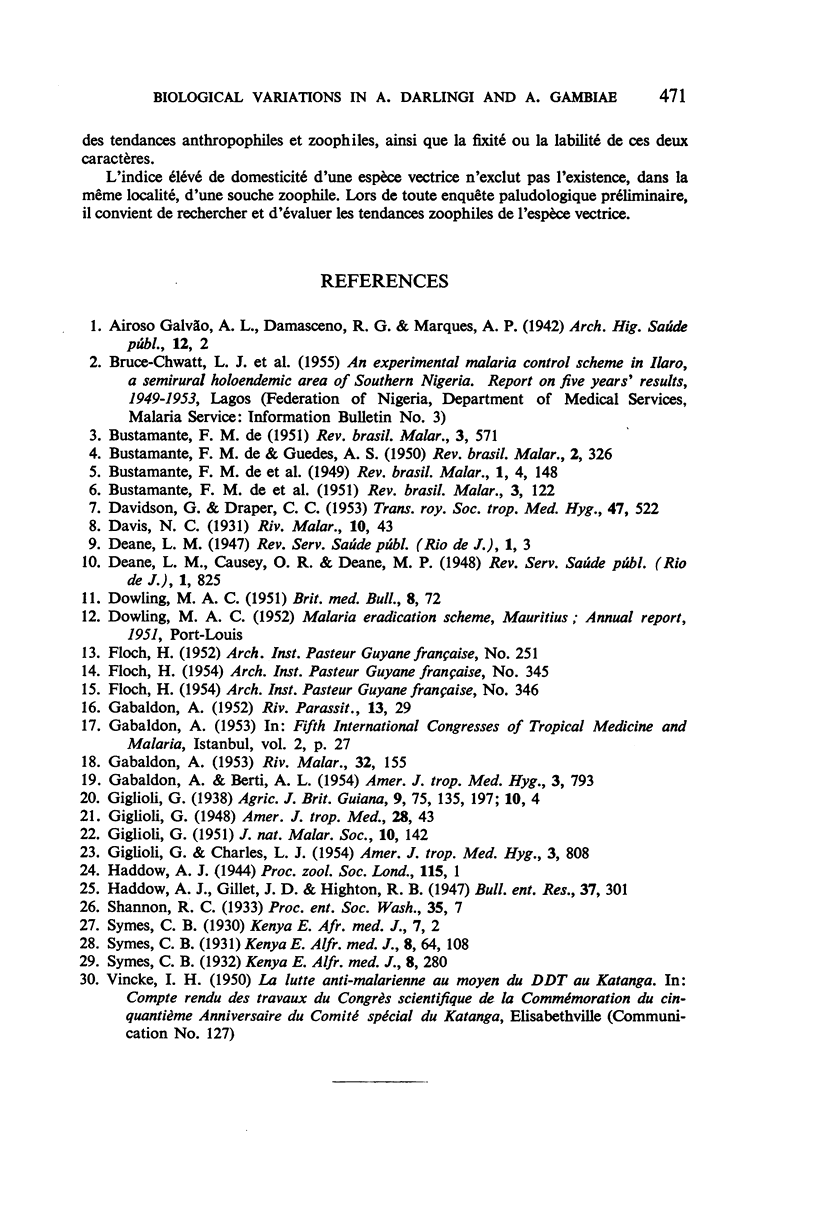
Selected References
These references are in PubMed. This may not be the complete list of references from this article.
- CAGALDON A. Possible effects of residual insecticides on the interruption of malaria transmission. Riv Malariol. 1953 Dec;32(4-6):155–171. [PubMed] [Google Scholar]
- DAVIDSON G., DRAPER C. C. Field studies of some of the basic factors concerned in the transmission of malaria. Trans R Soc Trop Med Hyg. 1953 Nov;47(6):522–535. doi: 10.1016/s0035-9203(53)80005-2. [DOI] [PubMed] [Google Scholar]
- GABALDON A., BERTI A. L. The first large area in the tropical zone to report malaria eradication: North-Central Venezuela. Am J Trop Med Hyg. 1954 Sep;3(5):793–807. doi: 10.4269/ajtmh.1954.3.793. [DOI] [PubMed] [Google Scholar]
- GIGLIOLI G., CHARLES L. J. Reappearance of Anopheles darlingi Root in a controlled area of British Guiana's coastlands. Am J Trop Med Hyg. 1954 Sep;3(5):808–816. doi: 10.4269/ajtmh.1954.3.808. [DOI] [PubMed] [Google Scholar]
- GIGLIOLI G. Nation-wide malaria eradication projects in the Americas. III. Eradication of Anopheles darlingi from the inhabited areas of British Guiana by DDT residual spraying. J Natl Malar Soc. 1951 Jun;10(2):142–161. [PubMed] [Google Scholar]


